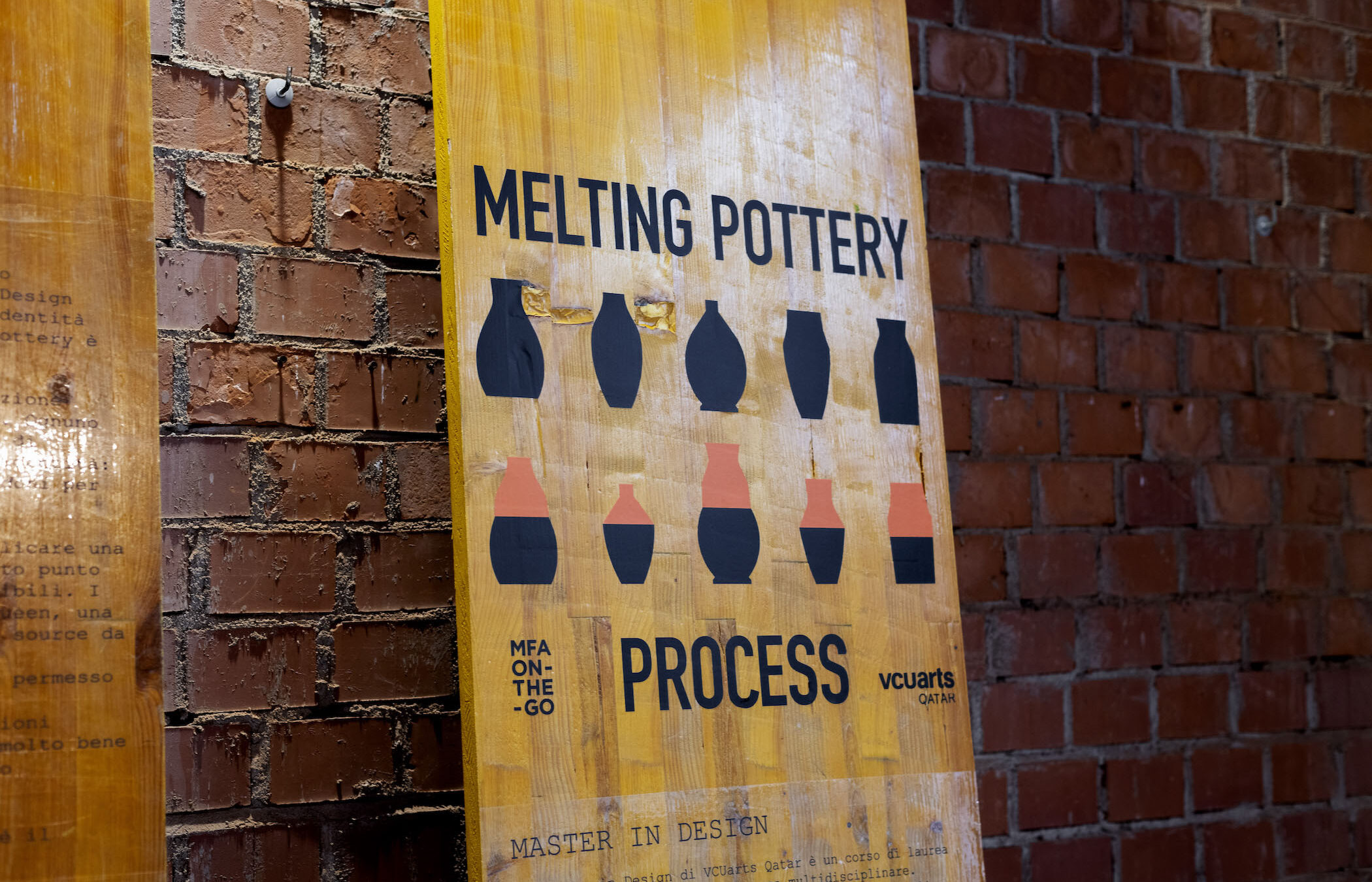- Academics
- Admissions & Enrollment Services
- Research
- Academic & Creative Spaces
- Strategic Partnerships
- Our Impact
- Student Affairs
- Campus & Community
Art and Design Now, VCUarts Qatar’s year-end show, at M7, is open to the public until July 5
Works by Faculty and Students on Display at Milan Design Week
June 6, 2022
Categories

Designers fuse computational engineering and digital manufacturing to reinterpret the humble ceramic vessel
How do you take a traditional making process – one that is almost as old as mankind, and typically bears visual markings that relate the final product to one person or place or culture – and transform it into something that becomes an aesthetic yet modern interpretation of cultural hybridization, and pluralism?
Faculty and students from our MFA in Design program decided to take on the challenge. The result? A distinctive collection of art objects that has made its way to being showcased at the Rossana Orlandi Gallery in Milan as part of the Milan Design Week, from June 7-12, 2022.



‘Melting Pottery’ is the name of this art collection that re-envisions the humble ceramic vessel used to store and transport goods centuries ago. The project was led by MFA in Design faculty members Marco Bruno and Giovanni Innella. Bruno explains how the idea came around.
“If you think of contemporary trade, shipping containers and crates might be what comes to your mind,” he says, “But it hasn’t always been like that. All ancient civilizations overlooking the seas in the Mediterranean and Middle Eastern regions made substantial use of ceramic jars, amphorae, and vessels of all sorts to ship various kinds of goods. While being a standard way for packing and shipping goods, those ceramic vessels were also aesthetically characterized according to their provenance, function and the era they were produced.”
Starting from this notion of the ceramic vessels as artifacts that connect different people and cultures, and taking advantage of technology, faculty and staff thought of a series of semantically and culturally charged ceramic vessels. The result was an array of artifacts – that all boast a special feature.
“These ceramic vessels are unique,” says Bruno. “There are 51 vases, and they are split into two, with the two halves being interchangeable across the whole series of vessels – resulting in 2601 possible combinations. This leads to a collection of ever-changing artifacts that can be combined in many different configurations to reflect the exchange and contamination of cultures we experience in our societies, and, in our very diverse workgroup at VCUarts Qatar who collaborated on this project.”
Indeed, the faculty and staff who collaborated on this project were drawn from over a dozen nationalities. The student participants were Abdulrahman Al Muftah (Qatar), Alaa Albarazy (Syria), Anurag Wallace (India), Ayah Elnour (Sudan), Faheem Khan (Bangladesh), Gabrielle Tesfaye (USA), Genta Retkoceri (Kosovo), Sidra Sohail (Pakistan), Somaia Dorzadeh (Iran), Tharwa Dalansi (Tunisia), and Steffi Braganza (India).
Innella, who co-led the project, adds, “The artifacts generated are a testimony to technology as well as heritage; each piece is a blend of traditional design, computational engineering, and digital manufacturing. The playful recombination of the two halves across the whole collection sends a message of cultural integration, while acknowledging our different identities.”
Prior to production, participants started out by researching ceramic vessels from various past cultures and civilizations. The jarrah of the Palestinian communities, the gargoulette used in Tunisia, the typical southern European wine flask, the milk can used in North America, the Eritrean mesob – these were just some of the starting points for the designers to define the profiles of their own containers.
The vessels were 3D-printed with a special machine capable of printing large pieces in clay. This machine was developed in Italy by Bruno Demasi, a digital ceramist, and founder of ClayCode, an artisanal company working on innovative clay productions. A series of parametric modifiers helped the students and faculty add features that further identify artifacts. For instance, a few vessels were designed to resemble woven wicker baskets or decorations typical to some parts of India, expanding the possibilities available to designers.
In addition to Bruno and Innella, Rab McClure (USA), Reema Abu Hassan (Palestine/Canada), Stella Colaleo (Italia), and Yasmeen Suleiman (Palestine/Jordan) were other VCUarts Qatar faculty members who took part in the project.
The finished series has already been displayed at renowned design venues in Italy such as Circolo del Design in Torino, and at Munlab, Ecomuseo dell’argilla, in Cambiano.
Tagged As

